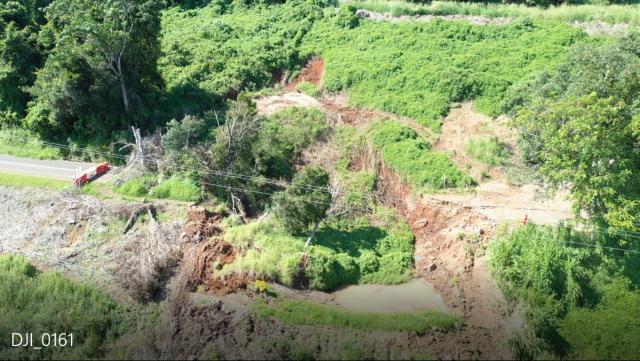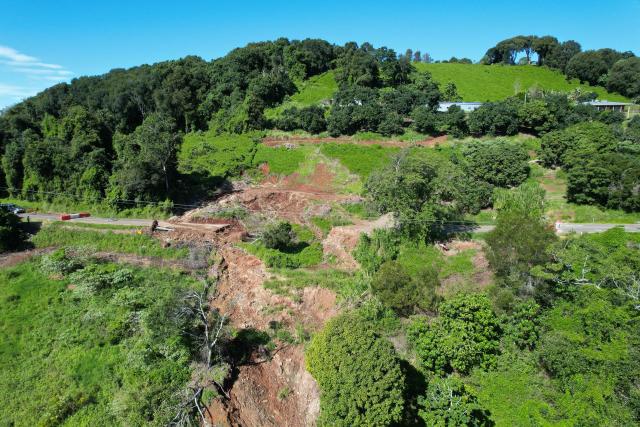The repairs to Noosa roads and infrastructure from a two-week rain event from 22 March to 5 April 2022 have resulted in the biggest project in Noosa Shire history, with spending about 10 times the annual budget and as much as the combined capital works budgets from the 2014-2020 term.
Council’s Disaster Reconstruction coordinator updated Council’s Ordinary meeting last week on the progress of reconstruction in response to the rain and flood event almost two years ago that greatly impacted Noosa.
Total program costs have amounted to $148 million and included about $50 million to repair a landslide site at Black Mountain, the largest landslide on the Sunshine Coast in 30 years with damage assessed to be as wide as a rugby league playing field and as deep as a five storey building.
Council’s dedicated project team has worked on the program and alongside it their Civil Operations Grading Crew have undertaken the repair of about 60 roads in the region.
After the devastating event the State Government activated support from the Queensland Reconstruction Authority (QRA), allowing funding to be offered under the Disaster Recovery Funding Arrangement which included reconstruction of essential public assets and Betterment Grants.
Cr Brian Stockwell said it was the early decision of acting chief executive officer Larry Sengstock to contract consultant engineers to gain quick and professional access into QRA funds that enabled Noosa to have the recovery almost under control just two years after the major disaster.
The meeting heard council opted to obtain funds from several available grants offered due to exceptional circumstance including grants for clean-ups, local recovery and resilience, recreation and community, flood risk monitoring and the Resilient Homes Fund Voluntary Home buy-back scheme.
The report delivered to council last Thursday looked at the scope of the disaster and how council was stepping through its elements.
Through most of 2022, the project team focused on ensuring all impacted infrastructure was safe for continued use while necessary engineering, testing, surveying, design work and funding was secured. During 2023, the project team commenced tendering of works and construction, the report showed.
“(Repairs) have to fit with the requirements of the grants and where we see an opportunity to improve on assets we will take advantage of that,“ the officer told the meeting.
“Value for money methodology is something we always step through.“
The officer said Noosa hinterland had faced the majority of challenges including the Black Mountain landslide, a further nine projects and lots of minor projects, that “may be small but for the community they are big deals.“
“From a delivery point of view council focused on recovery efforts,“ the officer said.
Council has made a point of informing impacted residents of work progress.
Having had their access road initially cut off by the landslide affected Black Mountain residents have been kept in the loop on repairs.
“We continually focus on making sure having a detour available all the time is a priority,“ the officer said.
“Residents bordering the site have access to coordinators and contractors. We’re in constant contact. We talk to them frequently. We try to let them know what’s happening in advance through emails going out to community to let them know what’s coming up.“
Through Betterment grants council has been able to make improvements to stormwater assets, fish habitat and through it increased their knowledge, particularly in the area of geotechnics.
“As a result of extensive landslide activity we noted, we do have mapped areas of geotechnical instability around the whole shire,“ an officer said.
“Because of the unprecedented level of geotechnical assessment we have had the opportunity to update that on basis of all geotechnical work we have done in past 12 months.“
The program progress status reported to the Queensland Reconstruction Authority is at 48 per cent completed. By May 2024, this is expected to significantly increase, with only five sites remaining to construct.








